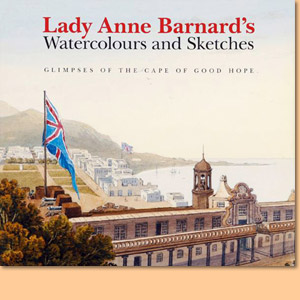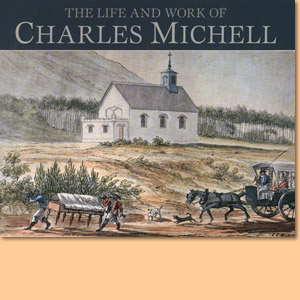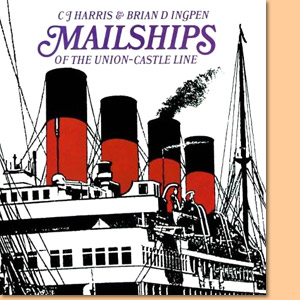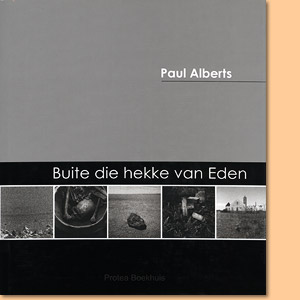Lady Anne Bernard's Watercolours & Sketches. Glimpses of the Cape of Good Hope, by Nicolas Barker
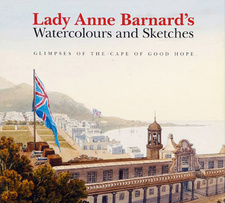
Lady Anne Bernard's Watercolours & Sketches. Glimpses of the Cape of Good Hope, by Nicolas Barker. ISBN 9781874950882 / ISBN 978-1-874950-88-2
A much deserved tribute to Lady Anne Barnard, 'Lady Anne Bernard's Watercolours & Sketches. Glimpses of the Cape of Good Hope' by Nicolas Barker includes her Panorama of Cape Town, reproduced in full colour as a foldout, measuring 1.2 meters long. This unique volume is limited to 1000 copies.
Few episodes in the history of South Africa have been so well documented as the first brief British occupancy of the Cape. This is largely due to the account of it from 1797 to 1802 that emerges from the journals and letters of Lady Anne Barnard, wife of Andrew Barnard, the first Colonial Secretary. These documents have been extensively edited and discussed over the last century. All those who have had occasion to consider the author have remarked on her personality, vividly evoked in her own writings. She has been seen as patrician, observing the indigenous inhabitants, the Cape Dutch settlers and even the new small British community with detached curiosity, or as naively involved, reflecting, as uncritically as a mirror, the human comedy against a landscape depicted with all the freshness of novelty. Too ready to measure what she saw and heard by Old World values, too apt to apply a new humanity to a complex 'frontier' society not ready for it, a defiant giver of 'balls' but anxious to experiment with gardening and agriculture in a foreign climate, feminist, anti-feminist, Abolitionist yet slave-owner, Lady Anne and her life and times at the Cape have been examined from every angle. But, anxious to extract every last fact and shade of meaning from her narrative, some of those who have written about her have been disinclined to take her as she saw herself, or simply to see her for what she was, a most unusual and gifted person, acknowledged as such in her own time. In recent years she has been described as 'an exceptional individual in the midst of a fascinating life', with 'wise and moral judgement'1 and the 'intelligence and social skills' that enabled her to play 'a role in public and private life which women, it was believed in her time, should be denied.' The Lindsay Family: Lady Anne Lindsay was born on 8 December 1750, the eldest of 11 children of James Lindsay, 5th Earl of Balcarres (1690-1768) and Anne Dalrymple. The Lindsay family crossed over from Normandy with William the Conqueror, and was well established at Crawford in the Lowlands of Scotland before the end of the 11th century. By the 14th century the Lindsays were one of the most powerful families in Scotland, and David Lindsay was created Earl of Crawford in 1398. The family grew and prospered, successive members playing an important part in Scottish affairs. By accident, in those often-lawless times, the earldom was alienated to another branch of the family, and John Lindsay, in the direct line, was created Lord Menmuir, one of the Octavians or ruling council of Scotland. He built himself a new house at Balcarres, a place commanding a view of outstanding beauty on the southern shore of Fife overlooking the Firth of Forth. His son David, Lord Balcarres, began the 'Bibliotheca Lindesiana', the family library, but then the shadow of Civil War fell. Lord Balcarres's son Alexander was an outstandingly loyal supporter of the King, and was created Earl of Balcarres. The family estates were sequestrated and with difficulty and only in part retrieved after the restoration of the monarchy. Colin, the 3rd Earl, and his successors remained loyal to the Stuart dynasty. By the mid-18th century, then, the wealth and influence of the family had declined, and, as James, the 5th Earl was unmarried, it was perhaps doomed to extinction. However in 1750, at the age of 60, James Lindsay married Anne Dalrymple, thirty-eight years his junior. [...]
This is an excerpt from the book: Lady Anne Bernard's Watercolours & Sketches. Glimpses of the Cape of Good Hope, by Nicolas Barker.
Book title: Lady Anne Bernard's Watercolours & Sketches
Subtitle: Glimpses of the Cape of Good
Author: Nicolas Barker
Type: Biography
Imprint: Fernwood Press
Publisher: Random House Struik
Cape Town, South Africa 2009
ISBN 9781874950882 / ISBN 978-1-874950-88-2
Hardcover, dustjacket, 31x28 cm, 116 pages, throughout photographs and illustrations
Barker, Nicolas im Namibiana-Buchangebot
Lady Anne Bernard's Watercolours & Sketches. Glimpses of the Cape of Good Hope
200 years after Lady Anne Barnard made her sketches and watercolours of the Cape of Good Hope, the entire series, is published for the first time.
Weitere Buchempfehlungen
Anton van Wouw: The smaller works
Van Wouw’s smaller works are reinterpreted and re-evaluated by the eminent professor Alexander E. Duffey.
Life and Works: Charles Michell
Life and Works is a detailed researched account of the life and work of Charles Michell, the first surveyor-general and civil engineer of the South African Cape Colony.
Mailships of the Union-Castle Line
Spanning the period 1857-1977, Mailships of the Union-Castle Line is the story of the mail service between Britain and South Africa and its concomitant cargo and passenger services.
Buite die Hekke van Eden
Buite die hekke van Eden is ’n unieke publikasie met ’n besondere kultuurhistoriese en artistieke waarde.

